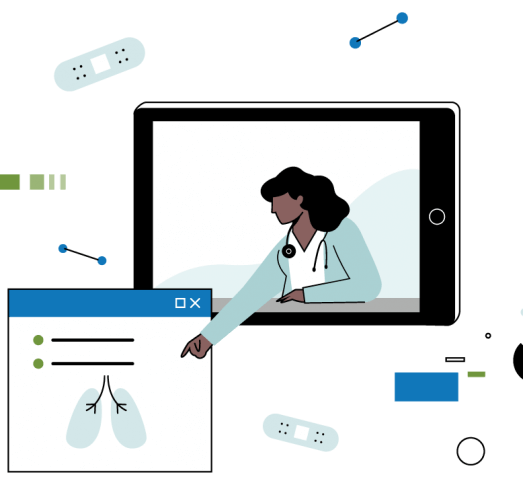
[White Paper] The 4 Big Moves to Emerge Stronger: A Playbook to “Being Digital” in Healthcare
AVIA
Insights
AVIA

At the end of November, hospitalizations due to COVID-19 hit the highest peak since the pandemic began, at 262.8 hospitalizations per 100,000 people. As reported over the past year, hospitals are nearing or reaching capacity and overextending resources.
In response to this increased burden on health systems, the Centers for Medicare and Medicaid Services (CMS) announced their Acute Hospital Care at Home program on Nov. 25, affecting how hospital care is delivered in the US throughout the pandemic and beyond.
The Acute Hospital Care at Home program is designed to increase the capacity of the healthcare system by allowing hospitals to care for patients outside of a traditional hospital setting. The new CMS program decreases existing regulatory barriers to providing safe hospital care for patients in their own homes.
The Acute Hospital Care at Home rule offers hospitals greater regulatory flexibility following the success of the Hospitals Without Walls program enacted by the agency in March 2020.
With COVID-19 flooding hospitals with patients that require intensive care and monitoring, CMS has identified over 60 different acute conditions that can be treated appropriately at home. The conditions include asthma, congestive heart failure, pneumonia, and chronic obstructive pulmonary disease (COPD).
Patients will only be cleared for at-home care after being admitted into emergency departments or inpatient hospital beds, and they must be examined by a physician in-person prior to beginning care at home. Once admitted into the Acute Hospital Care at Home program, patients will be evaluated by a registered nurse daily, either in-person or remotely, and will be visited by a nurse or mobile integrated health paramedics twice daily.
It is at the patient’s discretion whether to receive care in a hospital setting or at home. Patients will not be forced into home care if they don’t opt in to the program.
When the program was announced, six health systems had already received approval to begin offering acute hospital care at home: Brigham and Women’s Hospital, Huntsman Cancer Institute, Massachusetts General Hospital, Mount Sinai Health System, Presbyterian Healthcare Services, and UnityPoint Health.
Other health systems seeking approval for the program are required to have appropriate screening protocols preceding at-home care, including confirming working utilities, assessing physical barriers, and checking for domestic violence concerns. CMS will also require participating hospitals to report quality and safety data frequently.
Health systems looking to apply to the program can visit CMS’s Acute Hospital Care at Home portal to ensure they meet the criteria to participate.
The American Hospital Association (AHA) and other experts have pushed for a shift to at-home hospital care even before COVID-19, citing research around hospital-at-home programs that show reduced hospital readmissions and mortality rates and cost savings. With the Hospitals Without Walls and Acute Hospital Care at Home programs, the industry may begin to experience a permanent shift to at-home care that extends beyond the pandemic.
If your health system wants to prepare for the long-term care model shifts caused by Hospital at Home, AVIA experts can help. Contact us today to explore how AVIA can support your at-home care strategy.